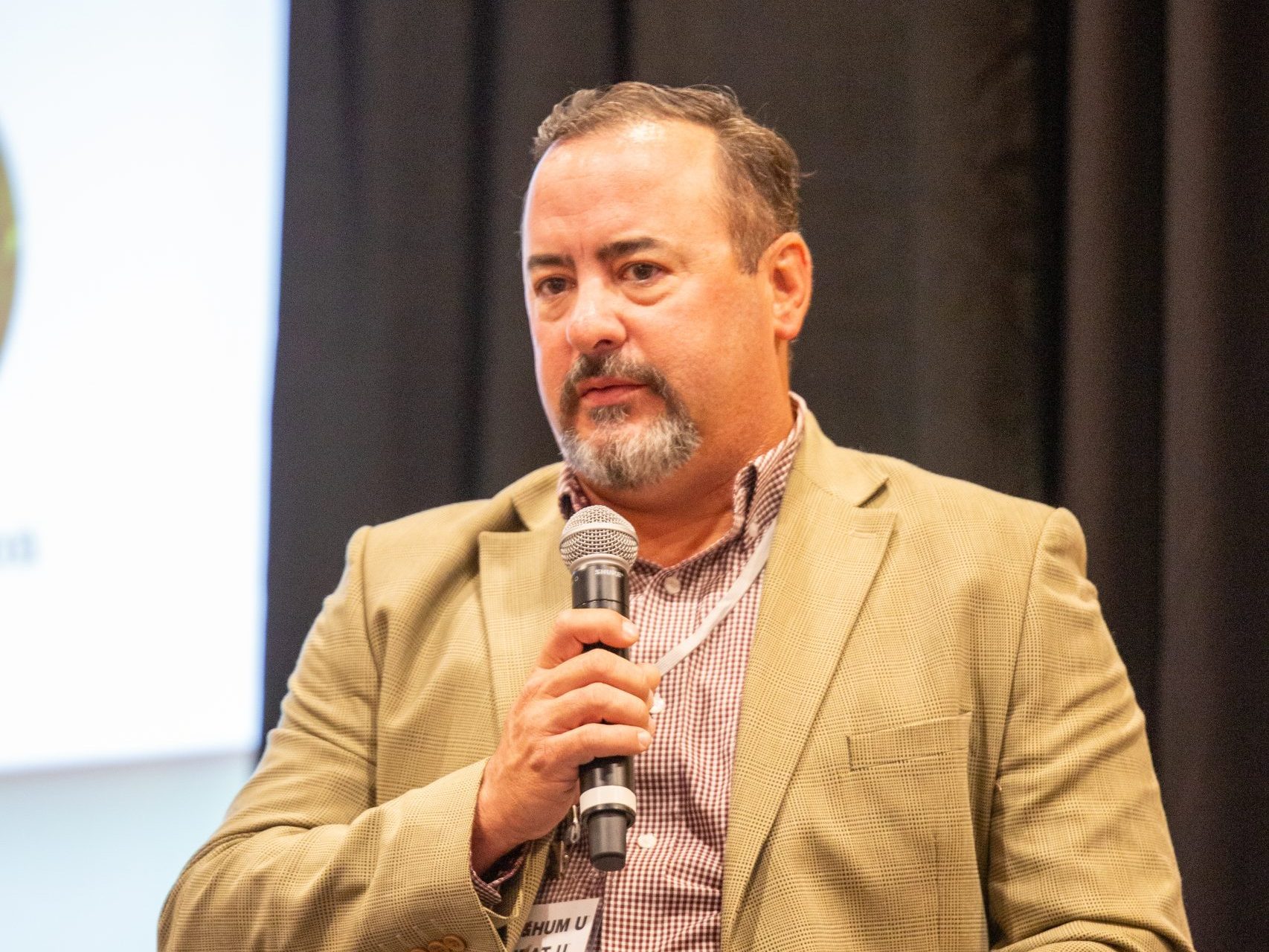Fifth generation farmer Brant Peterson told attendees at the recent Sorghum U/Wheat U in Wichita, Kansas, that in his first attempt at growing contest winning sorghum he missed winning the national division by two points.
“That really kind of lit a fire under me,” Peterson said.
Missing the top spot led Peterson to question past winners. They told him about different fertilizers, foliar applications, and fungicides that they used on their winning crops. Then he asked about seeding rates. Winners had 120,000 seed populations, while he’d only planted 60,000. He began running his own trials and planted varying seed rates. He found some of those numbers just didn’t work on his western Kansas operation, Winsome Farms.
In 2022 his efforts paid off when his irrigated sorghum, which yielded 245.8 bushels per acre, won the National Sorghum Producers Sorghum Yield Contest.
“Keep in mind,” Peterson said, “My yield contest winner is a 2.2-acre plot. We’re not talking an entire field.”
He shares the rest of the circle with corn, but also has to share the water. On his irrigated sorghum plot, his section sprinkler concentrates more water on the sorghum when it’s needed. In a normal year, the sprinkler would deliver 1.7 inches to the corn and an inch on the sorghum—with some help from Mother Nature. The first year his plot only got about 5 inches of water total.
Peterson suggested paying attention to the details of the crop and keeping the weeds out of it. He prefers a cultivator and roguing crew to keep things clean since it’s “historic corn on corn” ground. Plus, on that circle the nozzles went from 2,000 gallons per minute down to 700.
“And that’s after one of the wells has been re-drilled already,” he said. “That’s the seriousness of our water situation. So, I’m pushing to try to figure out how I can do more with less water all time.”
Future of sorghum
Peterson is excited about the future of sorghum, especially with its water conservation attributes. He wants to get some of the western Kansas dairies converted to an all-sorghum diet. In his role as chairman of the Kansas Grain Sorghum Commission, he’s looking towards ways to promote the crop.
“There’s products, proposals and grants that have been approved that are going to be working on tracking the how to best utilize feeding sorghum through ruminants,” he said.
Dairies lean heavily upon corn because they know exactly how many tons of milk they’ll get from a bushel of corn. It’s been repeated over and over, Peterson said.
“They know what they don’t know—is how sorghum is going to convert to that,” he said. “All that they know is corn, they don’t know the sorghum and I think that’s one of the things that keeps them hesitant to jump over to it.”
One market that’s gaining traction is sorghum’s place in pet foods. “Pet parents” take their jobs very seriously, and Peterson said the recognition of higher arsenic levels in rice that’s used in pet food has pushed some manufacturers towards sorghum.
“Sorghum is a great substitute for rice in the pet food industry,” he said. “And the cool thing is (it’s not) necessarily a specific brand, hybrid or anything else.”
Sorghum has also found its way into human food, and Peterson is happy to see how the Sorghum Checkoff is working to promote sorghum in the school systems.
In his area around Johnson, Kansas, they’ve been growing sorghum for nearly 50 years and farmers can “grow great sorghum on accident.”
The cool thing about sorghum, according to Peterson, is if a grower planted food grade sorghum, and doesn’t end up selling it in that avenue, it can go directly into other markets for sorghum. Seed costs are relatively the same too.
Since becoming part of the commission, Peterson said there’s more opportunities coming for sorghum producers, especially when it comes to research.
“There’s one seed company working on an iron chlorosis tolerance,” he said. “You get the herbicide tolerance from other companies, everybody working together to make better products. It gets really exciting, really fast for me.”
Sorghum and water are two of his passions, and Peterson is not afraid to say so.
“I’ll donate my time to come talk about sorghum or we can talk about water. I’ll donate my time to go lobby for sorghum and I’ll donate time to go lobby for Kansas water,” Peterson said. “You can’t have any conversation about any farming without talking about water. It is a big deal and it’s our lifeblood out west and we’re running out.”
Changing things up to help reduce water use is important for Peterson and there needs to be some things done to curtail use.
“Sorghum is a critical component to that,” Peterson said.
Kylene Scott can be reached at 620-227-1804 or [email protected].




